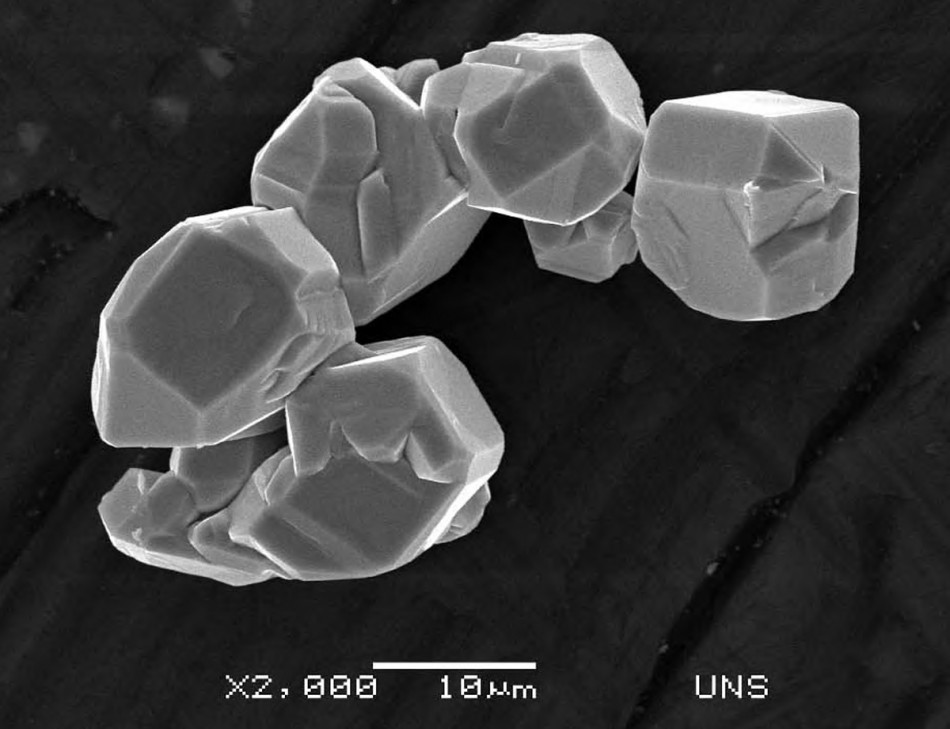 In my last article I mentioned non-nano zinc oxide as an ingredient in making your own sunscreen. I’ve gotten many questions asking what is nano-zinc oxide, which this article will cover. Nanoparticles have been used since the mid 1980′s, originally in scientific equipment like microscopes. Recently, nanoparticles have been introduced to consumer products (for example silver nanoparticles in socks & other anti-bacterial clothing) and in the cosmetic and pharmaceutical industries. Nanoparticles are microscopic substances of naturally occurring and man-made substances. For perspectives in size, 1 nano is about the width of human DNA. 75,000 nanometers are the width of human hair. Many nanoparticles are used in the hopes of enhanced product performance whether in science & industry, the medical community (drug delivery and diagnostic methods) or most recently in body care products. Currently there is insufficient research to support the safety of nanoparticles in products used for personal care, in fact much research is showing definite risk in using products with these ingredients. Here are some reasons why nanoparticles are not worth risking your health:
In my last article I mentioned non-nano zinc oxide as an ingredient in making your own sunscreen. I’ve gotten many questions asking what is nano-zinc oxide, which this article will cover. Nanoparticles have been used since the mid 1980′s, originally in scientific equipment like microscopes. Recently, nanoparticles have been introduced to consumer products (for example silver nanoparticles in socks & other anti-bacterial clothing) and in the cosmetic and pharmaceutical industries. Nanoparticles are microscopic substances of naturally occurring and man-made substances. For perspectives in size, 1 nano is about the width of human DNA. 75,000 nanometers are the width of human hair. Many nanoparticles are used in the hopes of enhanced product performance whether in science & industry, the medical community (drug delivery and diagnostic methods) or most recently in body care products. Currently there is insufficient research to support the safety of nanoparticles in products used for personal care, in fact much research is showing definite risk in using products with these ingredients. Here are some reasons why nanoparticles are not worth risking your health:
- Chemicals behave differently when they are in nano-form. In these micro-small forms, substances may trigger potentially harmful chemical reactions. One example most people are familiar with is Asbestos. In it’s inert form of silica (often used in packaging to absorb moisture – those little packets that say “do not ingest”), it is relatively safe. When the substance is changed to asbestos crystals it becomes highly dangerous, found to cause lung cancer when breathed in)
- Nanoparticles are difficult to eliminate from the body Preliminary research is supporting the fact that nanoparticles are absorbed by the body and not readily released once they are dissolved. The long term effects of the body absorbing these nanoparticles is too uncertain. There have been many substances once thought safe, only to be rapidly removed from product ingredients and store shelves when they are found harmful: DDT, lead in paint, synthetic estrogen, BPA to name a few. The FDA’s track record with new products such as the previously mentioned as well as nanoparticles is to wait and see the long term consequences. In the mean time, the general public is the “guinea pig” for nanoparticles in body care products like sunscreen, anti-aging creams and cosmetics.
- Research already shows they are unsafe. Dr. Robert Schiestl PH.D. at UCLA found in studies with nano titanium dioxide particles (now used in sunscreen) the nanoparticles began to induce double strand DNA breaks and chromosomal damage in mice within 5 days of exposure! This type of damage is what causes cancer to thrive.
Skin care companies promise renewed youth and cell regeneration with nanoparticles in their ingredients, much quicker than traditional formulations. So far, though the risks obviously outweigh the potential benefits with long term consequences even more unclear. Man has been using unrefined, pure ingredients like essential oils to keep skin healthy and beautiful for centuries. For the safest skin care use only products with simple ingredients like essential oils that are naturally anti-aging, make your own if you’d like, and avoid nanoparticles in all products.














No comments yet.